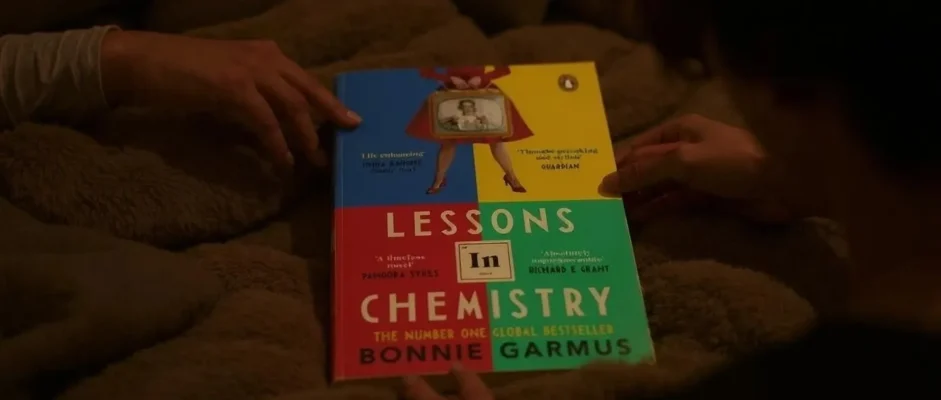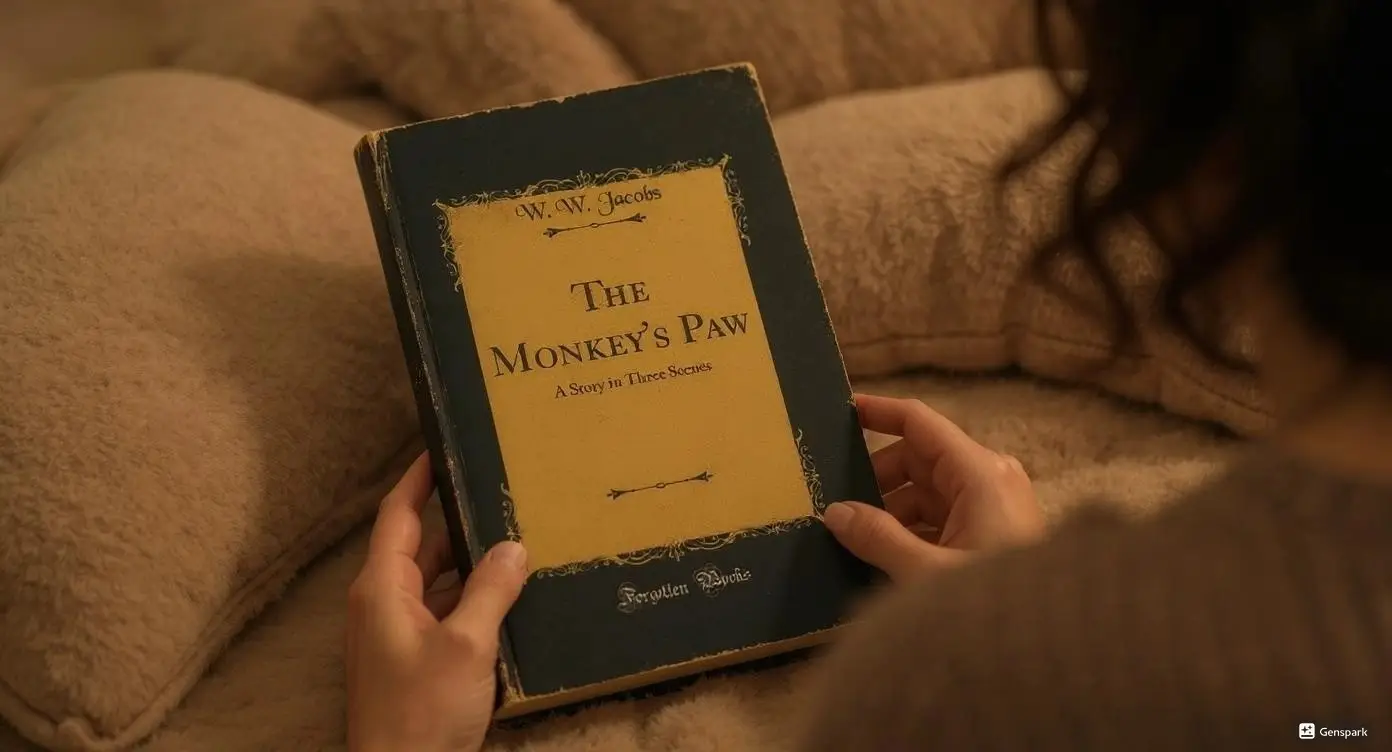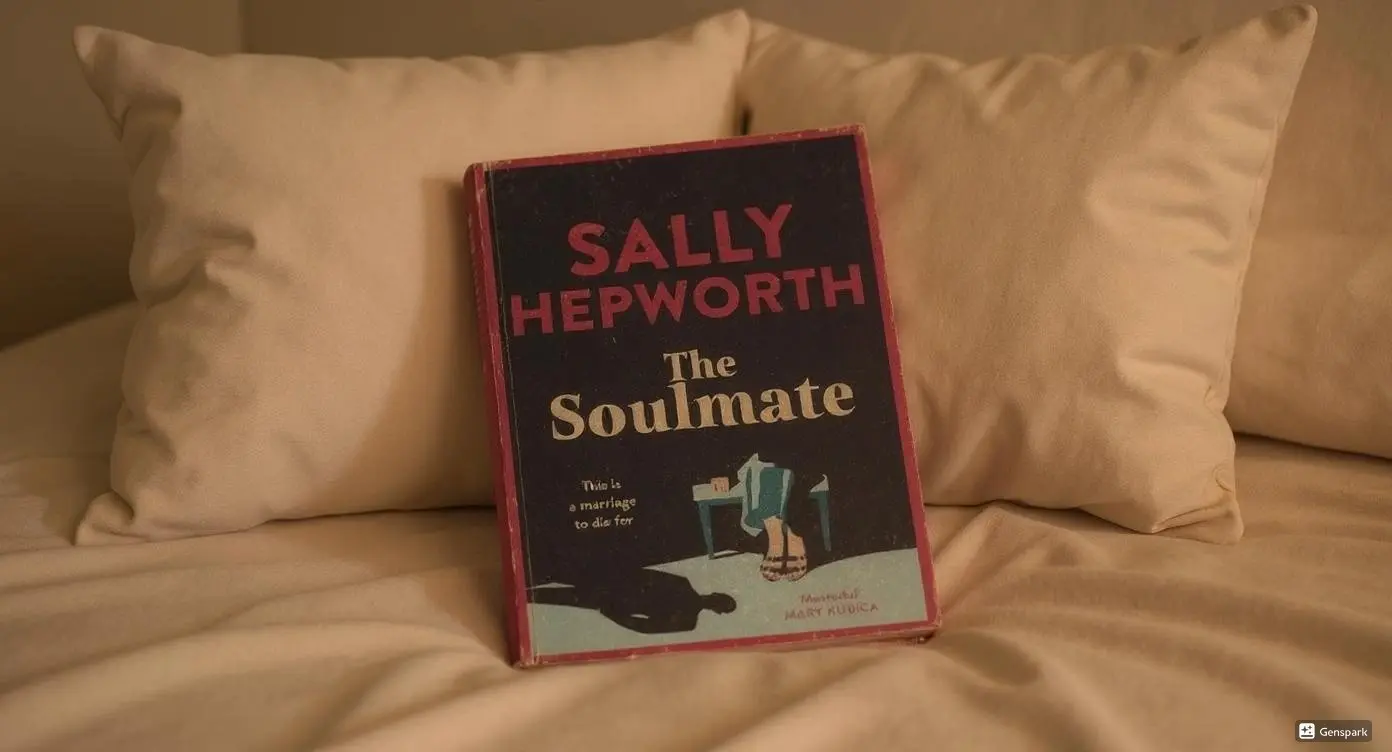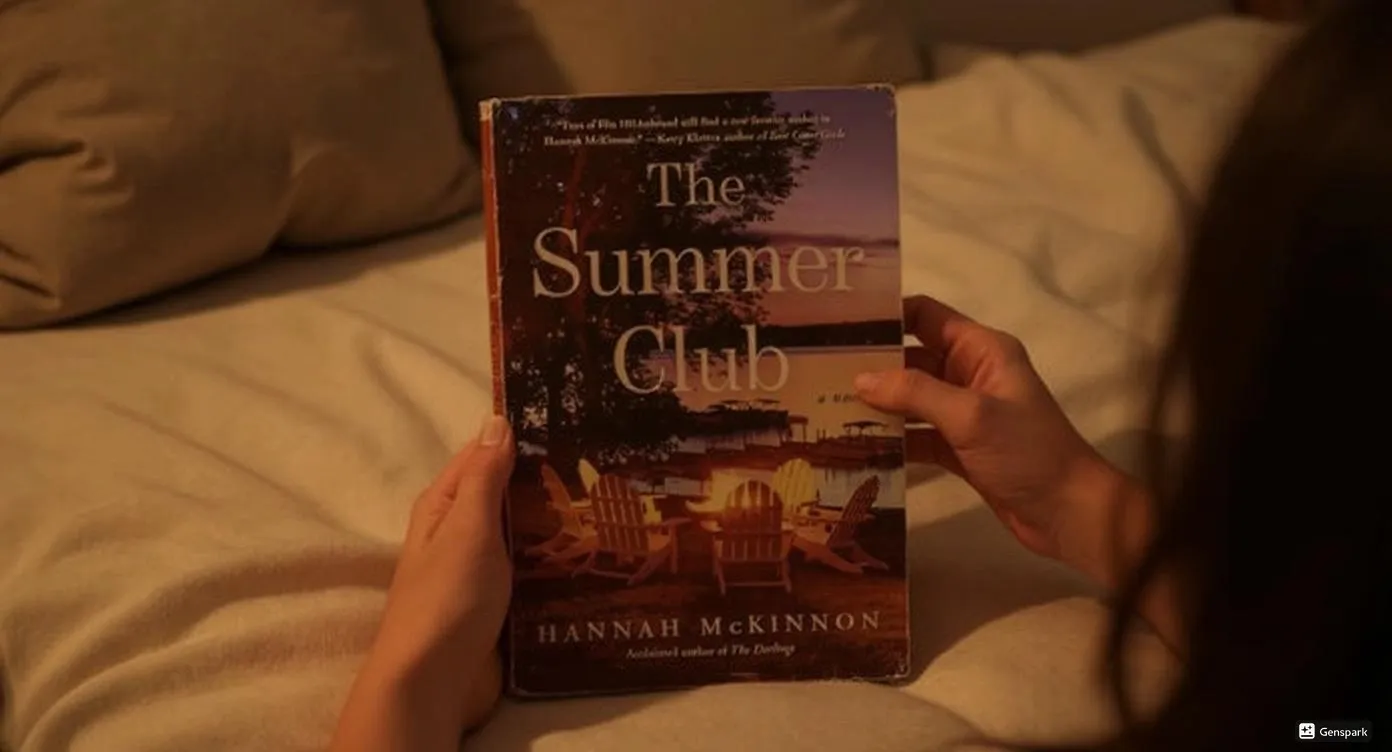I picked up Bonnie Garmus’s Lessons in Chemistry after hearing about this chemist-turned-cooking-show-host story everywhere, and I’ve gotta be honest – I was skeptical about the premise. Published by Doubleday in April 2022, it is Garmus’s debut novel, and debut novels can be hit or miss. But after staying up until 2 AM turning pages, I found myself completely absorbed in Elizabeth Zott’s world.
This book tackles the 1950s and 60s sexism in both science and television through the lens of a brilliant chemist who refuses to conform. Bonnie Garmus’ Lessons in Chemistry follows Elizabeth Zott as she navigates the treacherous and misogynistic 1950’s society and workplace. The story centers on how Elizabeth transforms her scientific knowledge into a revolutionary cooking show that empowers women across America.
What makes this book special is how Garmus weaves together feminist themes with genuine chemistry knowledge, creating a narrative that’s both educational and emotionally resonant. Garmus manages to successfully weave a story over nearly a decade that remains coherent, which is not an easy thing to do. The author brings a unique perspective to women’s struggles in STEM fields, making this both a period piece and a timeless story about fighting for recognition.
Key Takeaways
Elizabeth Zott’s character breaks every stereotype about women in the 1950s, showing that intelligence doesn’t have to be hidden behind domestic expectations. Her approach to cooking through chemistry principles demonstrates how science applies to everyday life in ways most people never consider.
The relationship between Elizabeth and Calvin Evans showcases what true partnership looks like when both people respect each other’s intellect and ambition. Their connection goes beyond romance to become a meeting of brilliant minds who challenge each other professionally.
Garmus expertly uses humor to address serious topics like workplace discrimination and gender inequality without making the story feel preachy or heavy-handed. The comedic elements make the social commentary more digestible while still driving home important points.
The supporting characters, particularly Six-Thirty the dog and young Madeline, provide different perspectives on Elizabeth’s journey and show how her influence extends beyond just her television audience.
The cooking show format becomes a metaphor for how women can reclaim their power and education, turning domestic spaces into platforms for learning and empowerment rather than places of limitation.
Basic Book Details:
Publishing Information: March 31, 2022 by Doubleday
Genre: Historical Fiction, Feminist Literature
Plot: Chemist Elizabeth Zott becomes a cooking show host after being fired from her research position
Series Information: Standalone novel
Page Count: 393 pages
Main Characters:
- Elizabeth Zott: Brilliant chemist turned cooking show host
- Calvin Evans: Renowned scientist and Elizabeth’s partner
- Madeline: Elizabeth’s precocious daughter
- Six-Thirty: The dog who becomes Elizabeth’s companion
Plot Summary And Historical Context
Elizabeth Zott’s Journey From Chemist To Television Host In 1960s America
In November 1961, a depressed Elizabeth Zott packs her daughter Madeline’s school lunch before heading to work: she is the star of a nationally beloved cooking show, Supper at Six. But Elizabeth’s path to television stardom wasn’t planned or desired. She started as a research chemist at Hastings Research Institute, where she faced constant discrimination and dismissal from male colleagues who couldn’t accept her brilliance.
The historical context is crucial here – the 1950s and early 60s were brutal for women in science. I found myself getting angry at the realistic portrayal of how Elizabeth was treated, passed over for promotions, and eventually fired despite her exceptional work. Garmus doesn’t sugarcoat the sexism; she presents it with all its ugly reality.
What makes Elizabeth’s television career fascinating is how she refuses to dumb down her approach. Instead of typical cooking show patter, she explains the chemical processes behind baking, the molecular structure of proteins, and why certain combinations work. This approach accidentally educates her audience while they learn to cook.
The Intersection Of Science And Domesticity Through Supper At Six Cooking Show
The genius of Supper at Six lies in how Elizabeth transforms cooking from mindless domestic duty into applied chemistry. She treats her kitchen like a laboratory, complete with precise measurements and scientific explanations. This approach revolutionizes how her viewers think about food preparation.
I particularly loved how Garmus shows Elizabeth’s viewers beginning to see themselves as scientists in their own kitchens. Women who had been told they weren’t smart enough for science suddenly understood complex chemical processes through cooking. It’s a brilliant metaphor for how education can happen anywhere when presented properly.
The show becomes a platform for Elizabeth to address larger issues – from women’s rights to single motherhood – while maintaining the pretense of being just a cooking program. Chemist Elizabeth Zott is not your average woman. In fact, Elizabeth Zott would be the first to point out that there is no such thing as an average woman.
Character Development And Narrative Technique
Elizabeth Zott As Feminist Protagonist And Scientific Mind In Male-Dominated World
Elizabeth Zott stands out as a feminist character because she never compromises her intelligence or ambition for others’ comfort. She’s prickly, demanding, and refuses to smile when she doesn’t feel like it. I appreciate that Garmus doesn’t make her “likeable” in traditional ways – she’s brilliant and knows it, which makes some people uncomfortable.
Her scientific mind approaches every problem methodically, from raising her daughter to dealing with workplace harassment. This consistency in character makes her feel real rather than like a feminist fantasy. She makes mistakes, has blind spots, and sometimes her directness hurts people, but she never stops being authentically herself.
The way Elizabeth handles motherhood particularly impressed me. She applies the same logical approach to parenting that she uses in chemistry, teaching Madeline to think critically and question everything. This creates a fascinating dynamic where a child becomes wise beyond her years through scientific reasoning.
Supporting Characters Including Calvin Evans, Madeline, Six-Thirty, And Their Symbolic Roles
Calvin Evans serves as more than just Elizabeth’s love interest – he’s her intellectual equal who recognizes her brilliance from their first meeting. Their relationship shows what happens when two brilliant minds connect without ego or competition. Calvin’s tragic early death propels Elizabeth into single motherhood, but his influence continues throughout the story.
Madeline, Elizabeth’s daughter, represents the next generation of women who will grow up differently because of Elizabeth’s example. At eight years old, she’s already questioning gender roles and thinking scientifically about problems. Her precocious nature sometimes strains credibility, but she serves as hope for the future.
Six-Thirty, the dog, might seem like comic relief, but he represents loyalty and unconditional acceptance in Elizabeth’s often hostile world. His presence provides emotional grounding when human relationships become complicated. The dog’s perspective chapters add humor while showing Elizabeth’s capacity for love and care.
The supporting cast of television colleagues, neighbors, and fellow scientists creates a rich world around Elizabeth. Each character represents different aspects of 1960s society – from the progressive to the rigidly traditional – allowing Garmus to explore various viewpoints on women’s changing roles.
Writing Style And Literary Craft Analysis
Bonnie Garmus’s Debut Novel Approach To Blending Humor With Serious Social Commentary
Garmus demonstrates remarkable skill for a debut novelist in balancing comedy with serious themes. Her humor never undermines the gravity of discrimination or the challenges Elizabeth faces. Instead, it makes the medicine go down easier, allowing readers to laugh while absorbing important social commentary.
The wit comes primarily through Elizabeth’s deadpan observations about the absurdity of gender expectations. When male colleagues express surprise at her knowledge, Elizabeth’s responses are both funny and cutting. This approach keeps readers engaged while making powerful points about sexism.
Laugh-out-loud funny, shrewdly observant, and studded with a dazzling cast of supporting characters, Lessons in Chemistry is as original and vibrant as its protagonist. The humor emerges naturally from character interactions rather than forced jokes, making it feel authentic to the story.
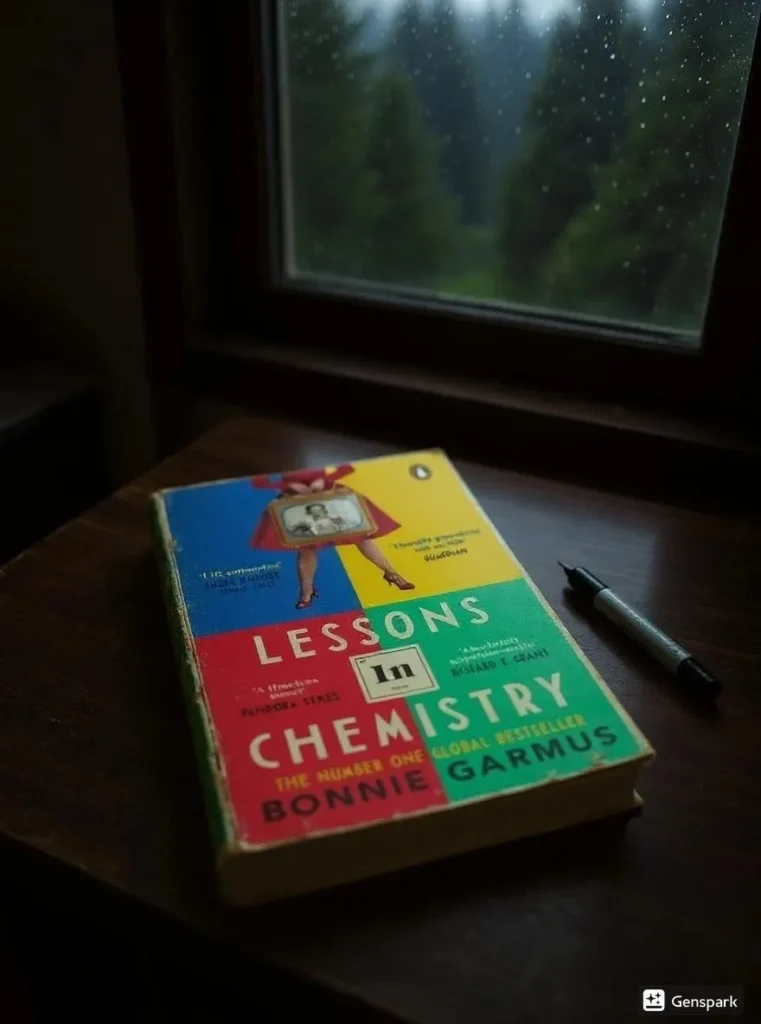
Narrative Structure Techniques Including Multiple POV Shifts And Non-Linear Storytelling
Garmus employs multiple perspectives throughout the novel, including chapters from Six-Thirty’s point of view, which could have been gimmicky but actually adds depth to the storytelling. These shifts provide different angles on Elizabeth’s character and fill in gaps in the narrative.
The non-linear structure moves between Elizabeth’s early career, her relationship with Calvin, and her television success. This technique builds suspense while gradually revealing how Elizabeth ended up hosting a cooking show. The pacing keeps readers engaged without feeling manipulated.
Time jumps are handled smoothly, with clear markers helping readers follow the chronology. Garmus uses these shifts to show character growth and societal changes, making the structure serve the story rather than showing off technical skill.
Thematic Exploration And Social Commentary
Feminism And Gender Equality In 1950s Scientific Community And Workplace Dynamics
The feminist themes in Lessons in Chemistry go beyond simple “women can do anything” messaging. Garmus explores the specific ways women were excluded from scientific careers, from being denied credit for their work to facing sexual harassment disguised as mentorship.
Elizabeth’s experience at Hastings Research Institute reflects real historical treatment of women scientists. The casual dismissal of her ideas, the assumption that she’s someone’s secretary, and the surprise when she demonstrates knowledge all ring true to documented experiences of women in STEM fields during this period.
What I found most powerful was how the book shows the ripple effects of discrimination. When Elizabeth is fired, it doesn’t just affect her – it impacts scientific progress, her daughter’s future, and the broader community. The personal becomes political in ways that feel natural rather than forced.
Science As Metaphor For Life Lessons And Personal Empowerment Through Chemistry-Cooking Integration
The central metaphor of chemistry as life philosophy works throughout the novel. Elizabeth applies scientific principles to human relationships, child-rearing, and problem-solving. This approach provides a framework for understanding how systematic thinking can improve any situation.
The cooking-chemistry connection serves multiple purposes: it makes science accessible to Elizabeth’s television audience, it provides practical applications for theoretical knowledge, and it transforms domestic work into intellectual pursuit. This metaphor empowers women to see their daily activities as scientifically significant.
Garmus uses chemical processes to explain emotional and social phenomena, creating a unique lens for examining human behavior. The precision required in chemistry parallels the attention Elizabeth demands in all aspects of life, making her character consistent and believable.
Pros
Character Development Excellence: Elizabeth Zott ranks among the most compelling female protagonists in recent fiction. Her complexity, intelligence, and refusal to conform create a memorable character who feels real despite extraordinary circumstances.
Historical Accuracy: The portrayal of 1950s sexism in scientific and professional settings feels authentic and well-researched. Garmus captures the era’s attitudes without caricature or oversimplification.
Unique Premise: The combination of chemistry and cooking provides fresh angles on both women’s rights and scientific education. This original approach sets the book apart from typical historical fiction.
Humor Integration: The comedy emerges naturally from character interactions and situations, making serious themes more accessible without diminishing their impact.
Supporting Cast Strength: Every character serves a purpose beyond plot advancement, from Six-Thirty’s loyalty to Madeline’s precocious wisdom. The ensemble feels complete and well-developed.
Cons
Occasionally Preachy Tone: Sometimes the feminist messaging becomes heavy-handed, particularly in Elizabeth’s television speeches. While thematically important, these moments can feel like lectures rather than natural dialogue.
Convenient Plot Resolutions: Several conflicts resolve too neatly, particularly Elizabeth’s career transitions and some relationship developments. The story occasionally prioritizes feel-good outcomes over realistic complexity.
Madeline’s Precocious Nature: While Madeline represents hope for the future, her eight-year-old wisdom sometimes strains credibility. Her insights feel more like adult observations than authentic child perspectives.
Limited Diversity: The cast remains predominantly white, which feels like a missed opportunity to explore intersectional discrimination in 1950s America. The focus on gender excludes other important social justice issues of the era.
Predictable Romance Elements: The relationship between Elizabeth and Calvin, while well-developed, follows familiar patterns that don’t match the originality of other plot elements.
Final Verdict
Lessons in Chemistry succeeds as both entertainment and social commentary, offering readers a compelling protagonist who challenges expectations while delivering important messages about women’s potential in science and society. Despite some minor flaws in pacing and occasional heavy-handedness, Garmus has created a debut novel that resonates with contemporary readers while honoring historical struggles.
The book works particularly well for readers interested in women’s history, scientific careers, and stories about characters who refuse to conform to societal expectations. Elizabeth Zott’s journey from dismissed chemist to influential television host provides both inspiration and entertainment.
While not perfect, Lessons in Chemistry offers enough originality, humor, and heart to justify its popularity. Garmus demonstrates strong potential as a novelist, and I look forward to seeing how her writing develops in future works.
Dionysus Reviews Rating: 6/10
Sip The Unknown—Discover Stories You Never Knew You’d Love!
Dionysus Reviews Has A Book For Every Mood
Biography & Memoir
Fiction
Mystery & Detective
Nonfiction
Philosophy
Psychology
Romance
Science Fiction & Fantasy
Teens & Young Adult
Thriller & Suspense
Frequently Asked Questions
What would you do if you discovered your cooking show was actually teaching chemistry to thousands of women?
This question gets to the heart of Elizabeth’s accidental revolution. She never intended to become an educator or feminist icon – she just wanted to explain why certain cooking techniques work scientifically. The unintended consequences of her approach raise questions about how we can integrate learning into everyday activities.
How does Elizabeth’s relationship with Calvin Evans differ from typical romantic relationships in historical fiction?
Unlike many period romances, Elizabeth and Calvin’s relationship centers on intellectual equality and mutual respect for each other’s work. They collaborate professionally while maintaining separate identities, which was revolutionary for the 1950s setting and remains refreshing in contemporary fiction.
Why does Garmus choose to include chapters from Six-Thirty’s perspective?
The dog’s viewpoint provides emotional counterpoint to Elizabeth’s analytical approach while offering comic relief during tense moments. Six-Thirty represents unconditional loyalty and acceptance, qualities that Elizabeth struggles to find in her human relationships due to societal prejudices.
How does the cooking show format serve as a metaphor for women’s empowerment?
Supper at Six transforms the domestic sphere from a limitation into a platform for education and influence. By teaching chemistry through cooking, Elizabeth shows how women can reclaim traditional roles and make them intellectually significant, reaching audiences who might reject direct feminist messaging.
What makes Elizabeth Zott different from other strong female characters in historical fiction?
Elizabeth’s strength comes from her refusal to be likeable rather than her determination to please others. She doesn’t hide her intelligence or apologize for her ambitions, which makes her feel more authentic than characters who balance strength with traditional feminine qualities.
